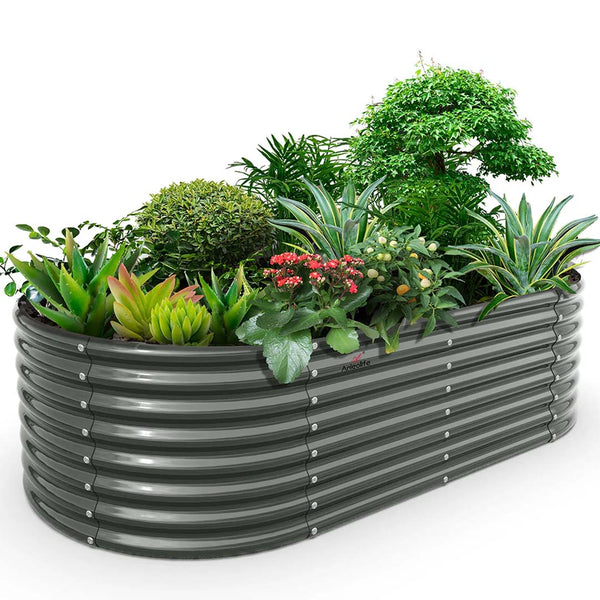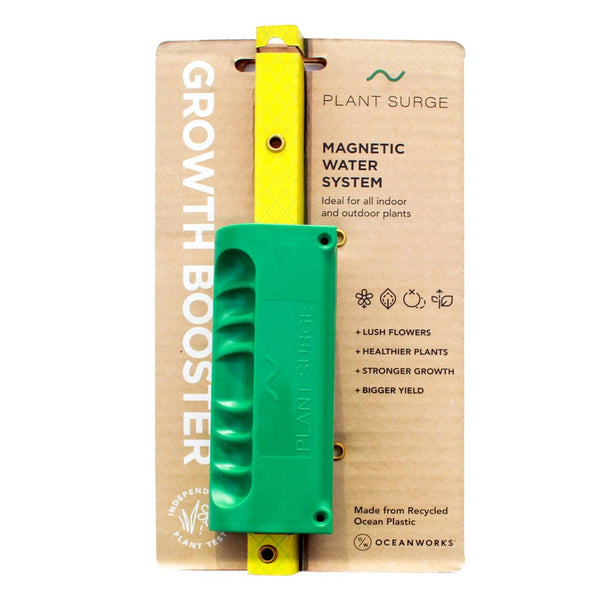Does Electroculture Keep Bugs Away? The Surprising Pest Control Benefit Nobody Talks About

Understanding Electro Culture Gardening
Introduction to Electro Culture Gardening
Electro culture gardening is like giving your plants a little electric pep talk. By using techniques like electrostatic fields and electric current stimulation, we can help plants grow stronger and healthier. This method is catching the eye of everyone from homesteaders who want to keep things natural to city gardeners looking to boost their harvest without relying on chemical fertilizers.
The idea behind electroculture is that plants might get a kick out of electrical impulses, which could help them grow and keep pests at bay. While scientists have had mixed feelings about how well this works, plenty of gardeners swear by it, making it a hot topic in the gardening world.
Historical Background and Development
Electroculture gardening has been around since the late 1800s. It all started when Finnish geophysicist Karl Lemström noticed that plants seemed to flourish near the aurora borealis. He figured that the electrical vibes from the atmosphere might be giving plants a growth boost (The Spruce). This sparked a wave of research into how electricity might help plants thrive.
In the 1920s, German experiments showed that electrified plants like strawberries and beans grew bigger and ripened faster. These findings helped shape electroculture techniques. But as the 20th century rolled on, interest in electroculture faded, overshadowed by advances in plant science and the rise of commercial fertilizers.
Despite past doubts, recent studies have rekindled curiosity about electroculture's perks. While some claims are still up in the air, there's evidence that electricity can boost plant growth and fend off certain pests. As we dig deeper into electroculture gardening, we might find it offers a natural, eco-friendly way to meet our gardening goals.
For more on the benefits and techniques of electroculture gardening, check out our articles on electroculture gardening and does electroculture work.
Benefits of Electro Culture Gardening
Electro Culture Gardening is like a secret weapon for our green thumbs, offering perks that can really shake up our gardening game. From boosting the bounty of our harvests to giving our soil a health kick, this fresh approach is catching the eye of gardeners everywhere. Let's dig into why electroculture might just be the best thing since sliced bread for our gardens.
Increased Crop Yields
One of the coolest things about Electro Culture Gardening is how it can seriously amp up our crop yields. Imagine getting up to 20% more veggies and fruits compared to the old-school ways (Money Saving Era). That's music to the ears of anyone trying to grow more food, whether we're health nuts living off the land or city dwellers with a green streak.
| Method | Yield Increase |
|---|---|
| Traditional Gardening | Baseline |
| Electro Culture Gardening | Up to 20% |
Reduction in Water Usage
Besides giving us more crops, Electro Culture Gardening is a champ at cutting down water use—up to 50% less than the usual methods. This is a lifesaver for those of us dealing with dry spells or just wanting to be water-wise in the city. By keeping the soil nice and moist, our plants can stay happy even when the weather's not playing nice.
| Method | Water Usage Reduction |
|---|---|
| Traditional Gardening | Baseline |
| Electro Culture Gardening | Up to 50% |
Activation of Soil Microbes
Electro Culture Gardening also gives a boost to the little guys in the soil—those microbes that keep everything ticking. This method wakes up the good bacteria and fungi, which are key for recycling nutrients and keeping the soil fertile (Money Saving Era). A lively soil means stronger plants that can fend off pests and diseases. It's a win-win for seasoned gardeners wanting to jazz up their soil and newbies looking for easy, effective ways to grow.
| Soil Health Aspect | Impact |
|---|---|
| Microbial Activity | Increased |
| Nutrient Cycling | Enhanced |
| Soil Fertility | Improved |
By jumping on the Electro Culture Gardening bandwagon, we can enjoy tougher, healthier plants, save water, and get more from our crops—all while keeping our gardening eco-friendly. For more on how this method works, check out our article on does electroculture work.
Techniques in Electro Culture Gardening
Electroculture gardening is like giving your plants a little electric pep talk. By tapping into natural electrical phenomena, we can boost plant growth and resilience, making them healthier and more productive. Let's dive into three nifty techniques: electrostatic fields, electric current stimulation, and capacitive discharge.
Electrostatic Fields
Think of electrostatic fields as a gentle electric hug for your plants. These fields are created when electric charges build up on surfaces, and they can work wonders for plant growth. Imagine your plants soaking up nutrients like a sponge and sprouting roots that dig deep and hold strong. Studies show that plants exposed to these fields can sprout faster and develop robust root systems.
| Effect | Description |
|---|---|
| Nutrient Uptake | Plants absorb essential nutrients from the soil more efficiently. |
| Germination | Seeds sprout quicker, leading to healthier seedlings. |
| Root Development | Roots grow stronger and deeper, providing better support. |
Electric Current Stimulation
Electric current stimulation is like giving your plants a little jolt of energy. By applying a low-voltage current to plants or soil, we can see a noticeable bump in crop yields. For example, oats and barley yields can jump by 22%, and cabbage can go wild with a 75% increase. It's like your plants are on a growth spurt, thanks to a bit of electricity (The Spruce).
| Crop Type | Yield Increase (%) |
|---|---|
| Oats | 22 |
| Barley | 22 |
| Cabbage | 75 |
Capacitive Discharge
Capacitive discharge is all about storing up electrical energy and releasing it in quick bursts to give plants a growth boost. This technique can speed up seed germination and make plants grow like they're on fast-forward. For instance, electricity from wind and rain can make pea seeds sprout 25% faster and grow 18% more (The Spruce).
| Effect | Description |
|---|---|
| Germination Speed | Seeds sprout faster, getting a head start on growth. |
| Growth Rate | Plants grow quicker, leading to earlier harvests. |
By weaving these techniques into our gardening routine, we can tap into the magic of electroculture to create gardens that thrive. Whether we're homesteaders looking for healthier crops or urban gardeners aiming for eco-friendly solutions, these methods offer a fresh way to boost plant health and productivity. Curious about how electroculture can transform your garden? Check out our articles on electroculture gardening and does electroculture work.
Impact on Plant Health
Electroculture gardening is like giving your plants a superhero cape, boosting their health and making them tougher against diseases and pests. By using electric fields, we can help plants become more resilient and ready to face whatever comes their way.
Disease and Pest Resistance
One of the coolest perks of electroculture gardening is how it helps plants fight off diseases and pests. Studies show that plants grown with these techniques have fewer pest and disease issues, which means more crops and healthier plants (Money Saving Era). It's like giving plants a stronger immune system, so they're better equipped to handle tough conditions.
Insects seem to steer clear of the static electric fields created by electroculture systems. Research has found that 82 different insect species tend to avoid these fields, making them a natural pest repellent (NCBI). This means we can cut back on chemical pesticides, making our gardens healthier and more sustainable.
| Benefit | Description |
|---|---|
| Boosted Immunity | Plants get a stronger defense against diseases and pests. |
| Fewer Pest Issues | Less bug trouble means more crops. |
| Natural Bug Repellent | Electric fields keep a bunch of insects away. |
Activation of Plant Defense Mechanisms
Electroculture gardening doesn't just fend off pests; it also kicks the plant's defense systems into high gear. By zapping plants with electric currents, we can make them tougher against environmental stress. This leads to plants that soak up nutrients better and grow stronger roots.
The electric fields used in electroculture can also offer unique ways to tackle pests. Techniques like arc-discharge can spot and zap insects, which is great for organic farming (NCBI). This lets us manage pests without nasty chemicals, fitting right in with our sustainable gardening goals.
| Mechanism | Effect |
|---|---|
| Electric Boost | Makes plants tougher and better at absorbing nutrients. |
| Bug Zapper | Finds and gets rid of pests without chemicals. |
| Better Growth | Results in stronger plants and bigger yields. |
By weaving electroculture techniques into our gardening routine, we can create a lively garden that supports plant health while cutting down on synthetic stuff. This not only perks up our gardens but also helps us grow food in a more eco-friendly way. For more on how electroculture can jazz up your gardening, check out our articles on electroculture gardening and does electroculture work.
Practical Applications and Results
Electroculture gardening isn't just some pie-in-the-sky idea; it's got real-world uses that deliver some pretty cool results. Let's check out how it boosts crop yields and helps the environment, all while keeping things down-to-earth.
Studies on Crop Yields
Research shows that electroculture can really pump up those crop yields. In a bunch of studies, crops like oats and barley saw their yields jump by as much as 22% when given a jolt of electricity. Picture this: thin insulated wires, charged up to 40,000 to 80,000 volts, hanging 7 feet above the crops, working their magic. And get this, zapping seeds with electricity can speed up germination, with cabbage yields shooting up by a whopping 75% in some tests (The Spruce).
| Crop Type | Yield Increase (%) |
|---|---|
| Oats | 22 |
| Barley | 22 |
| Cabbage | 75 |
These numbers show that electroculture gardening can really crank up food production, making it a great choice for those of us wanting to boost our harvests the natural way.
Environmental Sustainability Benefits
Electroculture gardening isn't just about bigger yields; it's also a win for the planet. Studies say this method can cut water use by up to 50%, which is a big deal for places dealing with drought or water shortages.
Plus, it gets the good stuff in the soil going. It wakes up the microbes, like bacteria and fungi, that help with nutrient cycling and soil health, creating a lively and balanced soil environment.
Another big plus is that plants grown with electroculture tend to have fewer pest and disease issues. This means better yields and healthier plants, showing how this gardening method can help with pest and disease control.
| Sustainability Benefit | Impact |
|---|---|
| Water Usage Reduction | Up to 50% |
| Soil Microbial Activity | Enhanced |
| Pest and Disease Resistance | Improved |
By jumping on the electroculture bandwagon, we can not only get more from our gardens but also do our bit for a greener, more sustainable gardening approach. This method fits right in with our goals of self-sufficiency and organic food production, letting us grow healthier plants while keeping our environmental impact low. For more on how electroculture can shake up our gardening game, check out our article on does electroculture work.
























